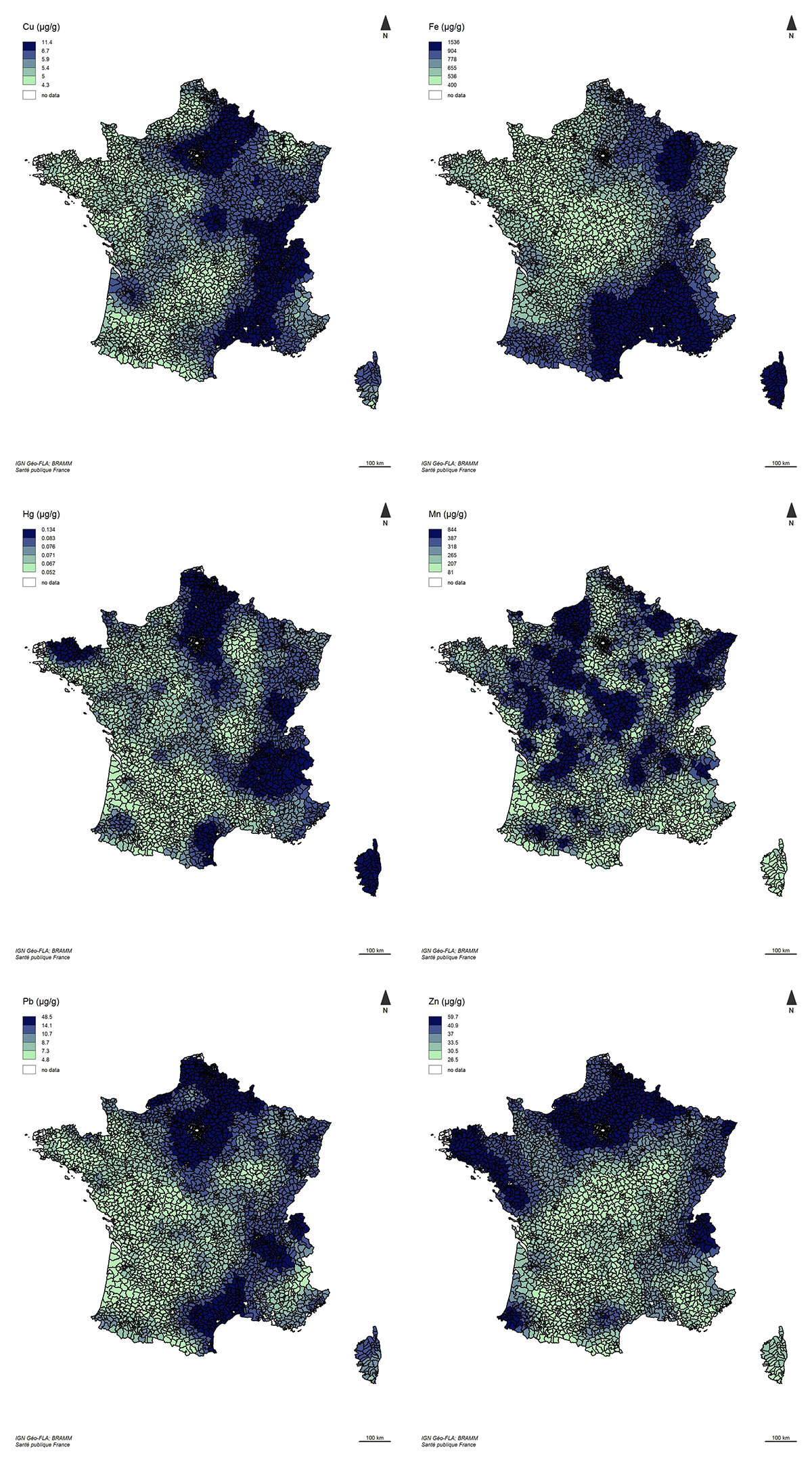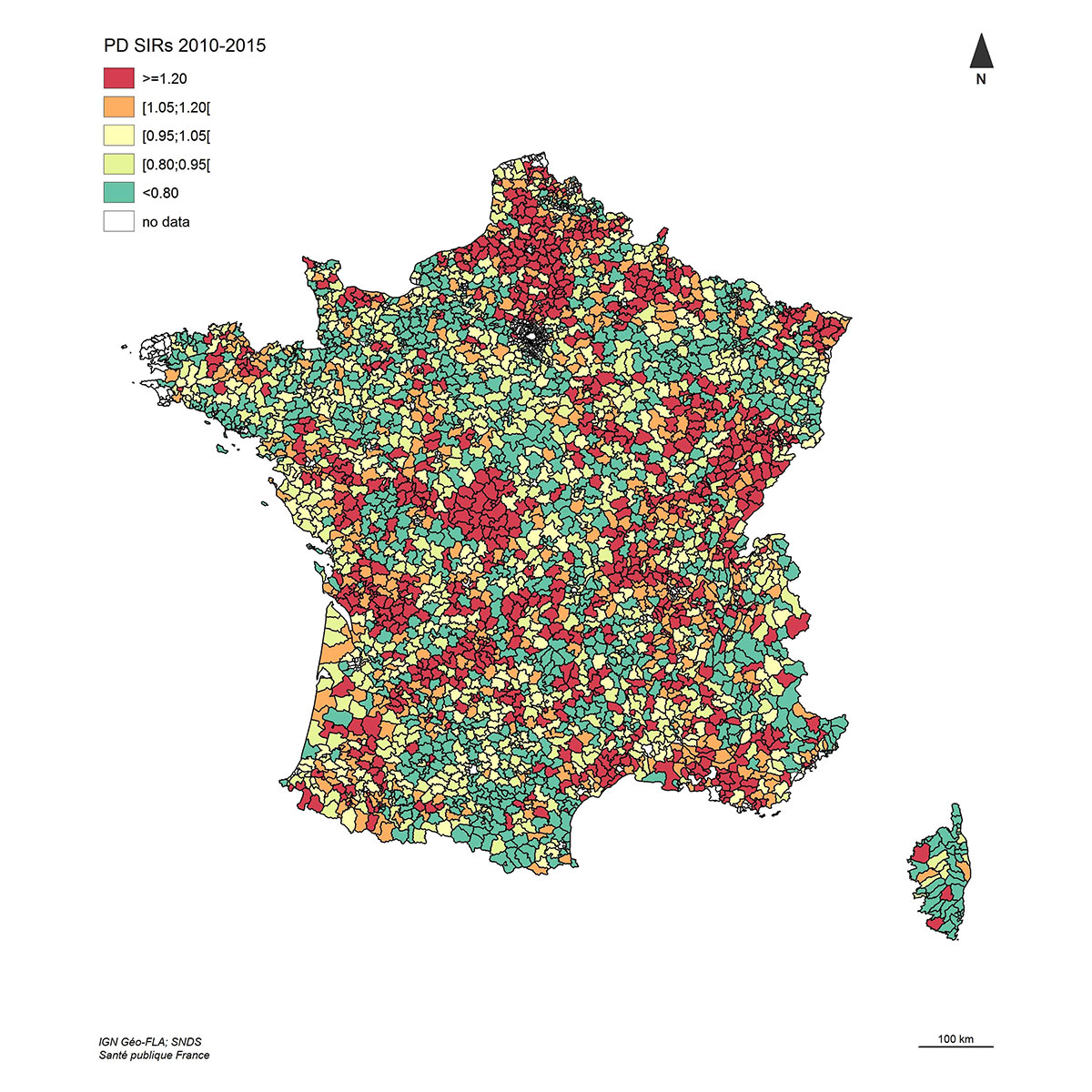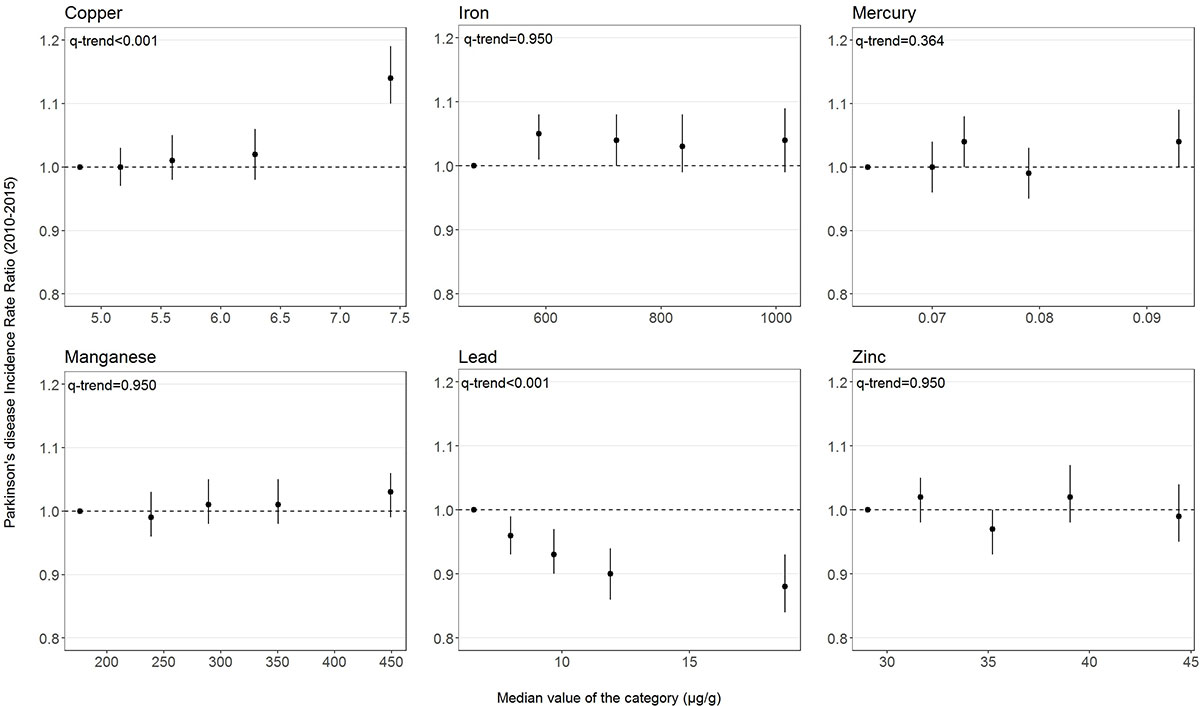Session Information
Date: Wednesday, September 25, 2019
Session Title: Epidemiology
Session Time: 1:15pm-2:45pm
Location: Les Muses, Level 3
Objective: To determine whether atmospheric deposition of 6 metal trace elements – copper (Cu), iron (Fe), manganese (Mn), mercury (Hg), lead (Pb), and zinc (Zn) – is associated with Parkinson’s disease (PD) incidence.
Background: There is some evidence on the role of exposure to specific metals in PD [1]. Atmospheric metal deposition can be measured in mosses in non-urban areas, and has been previously associated with overall mortality [2], but it has not been examined in relation to neurodegenerative diseases yet.
Method: We used data from the BRAMM network [3] as a proxy of atmospheric exposition. Concentrations of Cu, Fe, Mn, Hg, Pb, and Zn were measured in moss samples at 511 sites of mainland France in 1996 (except for Hg in 2000). We used ordinary kriging to interpolate the metal concentrations over mainland France with a 2-km resolution. As mosses were mostly collected in forested sites, we restricted the analysis to cantons excluding urban areas (small geographic units; n=3,344; mean size=160 km²). The median value of the interpolated metal concentrations was attributed to each canton. [Figure 1] Incident PD cases (2010-2015) were identified using a validated algorithm based on French national drug claims databases [4]. We used multivariable multilevel Poisson regression to examine the association between metal concentrations (categorized in 5 groups) and age/sex-standardized incidence ratios of PD, and to estimate incidence rate ratios (IRR) and 95% confidence intervals (CI) adjusted for neurologist density, smoking rates, a deprivation index, and pesticide expense per km². We used the false discovery rate to correct for multiple testing; q-values ≤0.05 are considered statistically significant.
Results: We identified 111,378 incident cases. The median number of cases per canton was 25 (range 0–245). [Figure 2] PD incidence was 14% higher in cantons in the highest quintile of Cu compared to the lowest (IRR=1.14; CI95%=1.10-1.19) and 12% lower in cantons in the highest quintile of Pb compared to the lowest (IRR=0.88; CI95%=0.84-0.93). Trend tests were significant only for these metals (q-trend<0.001). [Figure 3]
Conclusion: We observed an increased incidence of PD in non-urban areas characterized by high levels of Cu air pollution, in agreement with previous studies [1]. These results support the implementation of measures improving air quality.
References: [1] Willis AW, Evanoff BA, Lian M, et al. Metal emissions and urban incident Parkinson disease: a community health study of Medicare beneficiaries by using geographic information systems. Am J Epidemiol. 2010 172: 1357-1363. [2] Wolterbeek HT, Verburg TG. Atmospheric metal deposition in a moss data correlation study with mortality and disease in the Netherlands. Sci Total Environ. 2004 319: 53-64. [3] Lequy E, Saby NPA, Ilyin I, Bourin A, Sauvage S, Leblond S. Spatial analysis of trace elements in a moss bio-monitoring data over France by accounting for source, protocol and environmental parameters. Sci Total Environ. 2017 590-591: 602-610. [4] Moisan F, Gourlet V, Mazurie JL, et al. Prediction model of Parkinson’s disease based on antiparkinsonian drug claims. Am J Epidemiol. 2011 174: 354-363.
To cite this abstract in AMA style:
T. Vlaar, E. Lequy-Flahault, E. Moutengou, C. Meyer, S. Leblond, A. Elbaz, F. Moisan. Association of metallic air pollution with Parkinson’s disease: a French nationwide incidence study [abstract]. Mov Disord. 2019; 34 (suppl 2). https://www.mdsabstracts.org/abstract/association-of-metallic-air-pollution-with-parkinsons-disease-a-french-nationwide-incidence-study/. Accessed December 31, 2025.« Back to 2019 International Congress
MDS Abstracts - https://www.mdsabstracts.org/abstract/association-of-metallic-air-pollution-with-parkinsons-disease-a-french-nationwide-incidence-study/



